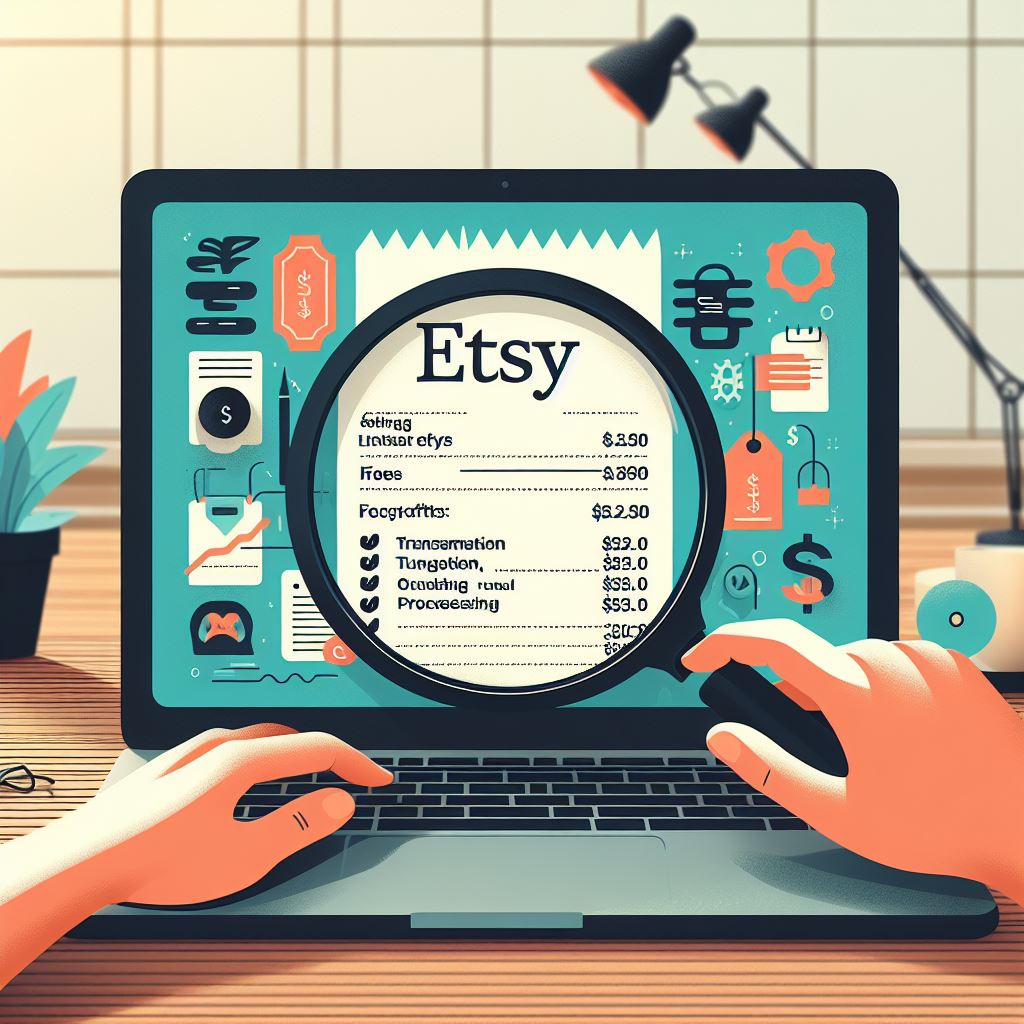Etsy is a bustling online marketplace known for its one-of-a-kind handmade and vintage goods, making it an attractive platform for creative entrepreneurs. With its vast audience and a focus on supporting independent sellers, Etsy offers an enticing opportunity to turn your passion into profit. However, before you jump into the world of Etsy selling, it’s essential to understand the fees involved. Etsy seller fees can significantly impact your earnings, and knowing how they work is crucial for pricing your products strategically and achieving long-term success.
This comprehensive guide will take you through all the Etsy seller fees you might encounter – from the unavoidable costs every seller pays to optional services you can choose based on your business needs. We’ll explain how each fee is calculated and offer practical strategies to minimize their impact on your bottom line. By the end of this post, you’ll be well-equipped to navigate Etsy’s fee structure and confidently price your products for profit.
Table of Contents:
- I. Mandatory Etsy Fees (Every Seller Pays These)
- II. Region-Specific Fees (Know Your Location)
- III. Optional Etsy Fees (Choose Your Tools)
- IV. Etsy Seller Fee Calculation & Minimization Strategies
- V. FAQ
- VI. Conclusion
I. Mandatory Etsy Fees (Every Seller Pays These)
These are the fundamental fees that apply to every Etsy seller, regardless of where they are located or how much they sell. Understanding these basic costs is the first step in determining your product pricing and ensuring profitability.
Listing Fees
Explanation:
Every time you create a new listing on Etsy to sell a product, you’ll pay a listing fee of $0.20 USD. This fee allows your listing to remain active for four months or until the item sells, whichever comes first. If the item doesn’t sell within those four months, you can choose to manually renew the listing for another $0.20 USD or enable automatic renewal. With automatic renewal, Etsy will automatically relist your item and charge the listing fee.
Multi-Quantity Listings:
When selling multiple quantities of the same item, you can create a single listing with the total quantity available. However, Etsy will charge the $0.20 USD auto-renewal fee for each additional quantity sold after the initial listing. This is especially relevant for print-on-demand (POD) sellers using services like Printify, which often integrate with Etsy and automatically set your listing quantity to 999 for unlimited stock. Each time a customer purchases an item, Printify will automatically renew the listing and you’ll be charged the renewal fee.
Private Listings:
If you want to offer a specific item to a particular buyer, you can create a private listing. These listings are not publicly visible on Etsy, and you only pay the $0.20 USD listing fee if the designated buyer purchases the item.
Illustrative Example:
Let’s say you’re selling handcrafted jewelry and list a specific necklace with a quantity of five available.
- Initial Listing Fee: $0.20 USD (for the first necklace listed)
- Sale of One Necklace:
- Auto-renew sold fee: $0.20 USD (to relist one necklace)
- Sale of Two More Necklaces:
- Auto-renew sold fee: $0.40 USD (to relist two necklaces)

Transaction Fees
Explanation:
Etsy charges a 6.5% transaction fee on all sales made through their platform. This fee is calculated based on the total order amount, which includes the item price, shipping costs, and any gift wrapping fees you charge. The transaction fee is calculated in the same currency that you set for your listing. If this differs from your Etsy Payments account currency, the fee will be converted at the current market exchange rate.
Illustrative Example:
Imagine you sell a hand-painted tote bag for $40 USD with a shipping cost of $6 USD.
- Transaction fee on item price: $40 x 0.065 = $2.60 USD
- Transaction fee on shipping: $6 x 0.065 = $0.39 USD
- Total transaction fee: $2.60 + $0.39 = $2.99 USD

Payment Processing Fees
Explanation:
Whenever a customer makes a purchase from your Etsy shop, you’ll be charged a payment processing fee. This fee is for processing the payment and transferring the funds to your bank account. The rates vary depending on your location and the payment method used.
Etsy Payments:
Etsy has its own payment processing system called Etsy Payments. In some countries, using Etsy Payments is mandatory, while in others, it’s optional. Etsy Payments allows buyers to pay for your products using a variety of methods, including:
- Credit cards
- Debit/bank cards
- Etsy gift cards
- Etsy Credits
- PayPal
- Apple Pay
- Google Pay
- Country-specific payment options
Illustrative Example:
If you’re a US-based seller, the current Etsy Payments processing fee is 3% + $0.25 USD per transaction. So, if you sell an item for $60 USD, the payment processing fee would be $2.05 USD ($60 x 0.03 + $0.25).
II. Region-Specific Fees (Know Your Location)
Beyond the mandatory fees, Etsy applies additional fees based on where your business is located and the currency you use for listings. These fees are often tied to tax regulations and varying operating costs in different countries.
VAT (Value-Added Tax)
Explanation:
Value-Added Tax (VAT) is a consumption tax added to the price of goods and services in the European Union and certain other countries. Etsy is responsible for collecting and remitting VAT on behalf of sellers in many VAT-eligible regions to comply with local tax laws. Other countries might refer to VAT using terms like Goods and Services Tax (GST) or Harmonized Sales Tax (HST), but they function similarly.
Impact on Listings:
If you’re an Etsy seller based outside of the US and Canada, you might be required to include applicable VAT in your listing prices. This approach ensures transparency for buyers and simplifies the VAT collection process for Etsy.
Impact on Fees:
Etsy is required to collect VAT on seller fees in countries where VAT applies. This means the fees discussed in this guide (listed exclusive of VAT) will have VAT added, increasing the overall cost for sellers.
Printify and VAT:
Printify, a popular print-on-demand service, understands the intricacies of VAT for international sellers and provides features to help manage it:
- Submit Accrued VAT IDs: Sellers can submit their VAT IDs to Printify for accurate tax calculation and reporting.
- Import Unsynced Orders: You can import existing orders from Etsy, including those with unsynced products, without incurring additional sales tax charges. Etsy would have already charged sales tax on these orders at the marketplace level.
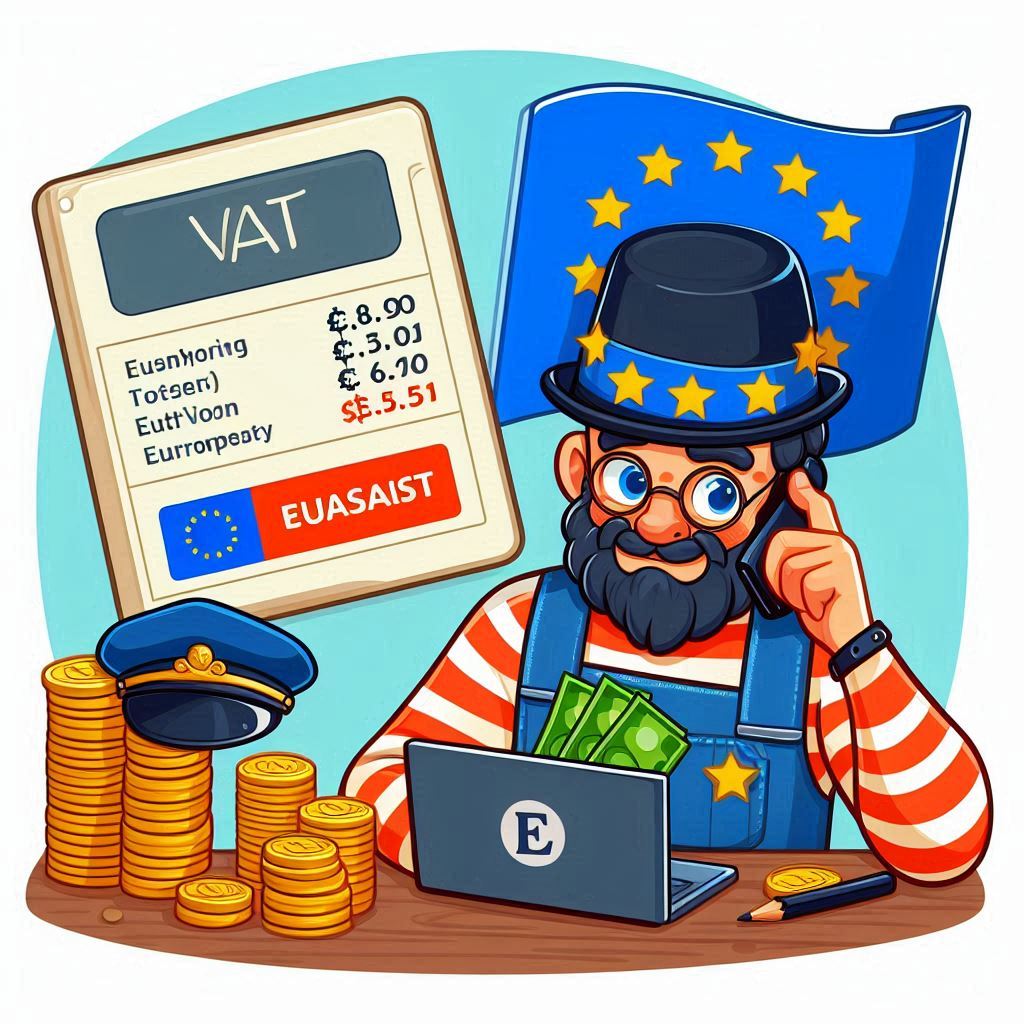
Sales Tax
US Sellers:
Etsy simplifies sales tax for US-based sellers by automatically calculating, collecting, and remitting sales tax on their behalf for orders shipped to US customers. This streamlined approach removes the burden of sales tax compliance from individual sellers.
International Sellers:
International sellers might be responsible for collecting and remitting sales tax, but only if their country has a marketplace facilitator law similar to those in the US and Canada. These laws require online marketplaces like Etsy to handle sales tax collection and remittance, simplifying the process for sellers. Check your local tax laws and consult a tax professional if you have questions about your specific obligations.
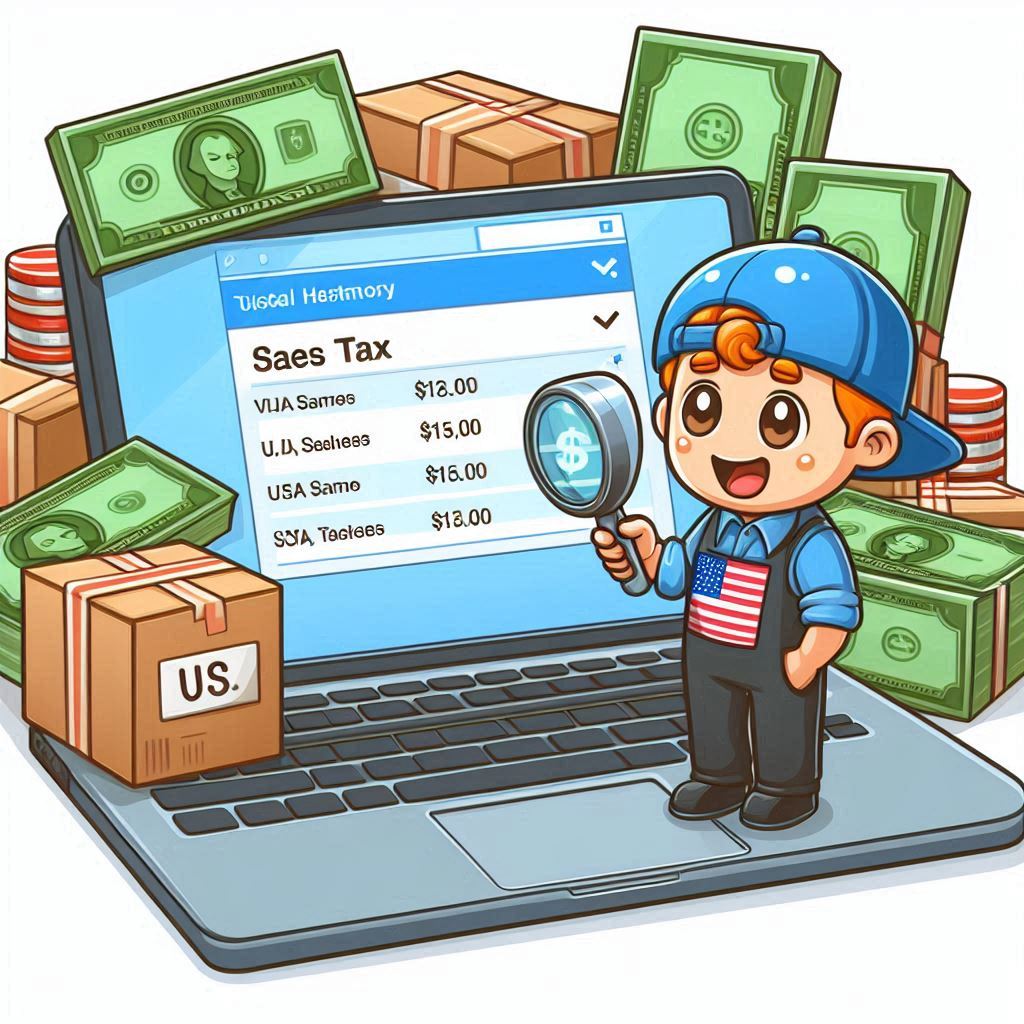
Regulatory Operating Fee
Explanation:
This fee is a recent addition to Etsy’s fee structure and currently applies to sellers in specific European countries. It’s designed to address the increasing cost of operating in those countries due to evolving regulations and compliance requirements for online businesses, helping to create a fairer landscape between online and physical sellers.
Countries and Percentages:
The Regulatory Operating Fee currently applies to these countries:
- United Kingdom: 2%
- France: 3%
- Italy: 2%
- Spain: 3%
- Turkey: 2%
This fee is calculated as a percentage of the total order amount, excluding taxes collected by Etsy.
Communicating to Customers:
Transparency with your customers about this fee is crucial. Clearly explain it in your shop policies, outlining how it affects the total price of their order.
III. Optional Etsy Fees (Choose Your Tools)
Etsy provides a range of optional services designed to help you enhance your shop, market your products, and ultimately grow your business. These services come with associated fees, so it’s wise to evaluate their potential benefits and choose those that align with your business strategy and budget.
Etsy Ads
Explanation:
Etsy Ads is Etsy’s on-site advertising platform, allowing you to promote your listings within the marketplace. Using Etsy Ads can increase your product visibility, drive more traffic to your shop, and potentially lead to higher sales.
Cost Structure:
Etsy Ads uses a daily budget system, giving you control over your ad spending. You can set a daily budget ranging from $1 to $25 USD. A higher daily budget typically results in your ads being displayed more frequently, boosting the chances of potential customers seeing your products.

Offsite Ads
Explanation:
Offsite Ads expand your advertising efforts beyond Etsy, promoting your listings on external platforms like Google, Facebook, Instagram, and Pinterest. This broader reach can help you connect with a larger audience and diversify your customer base.
Fee Structure:
Etsy charges a fee for Offsite Ads only when a sale is directly attributed to a click from one of these external platforms. The fee is calculated as a percentage of the total sale price and depends on your shop’s sales over the last 365 days:
- Less than $10,000 USD: The fee is 15% of the total sale price. You have the option to opt out of Offsite Ads while your shop’s sales remain below this threshold.
- $10,000 USD or More: Once your shop reaches this sales threshold, participation in Offsite Ads becomes mandatory for the lifetime of your shop. However, you’ll receive a discounted fee of 12% for each sale attributed to an Offsite Ad.
Important Note: Even if your shop’s sales subsequently fall below $10,000 USD, you’ll remain enrolled in the Offsite Ads program at the 12% fee rate.
Regardless of your sales volume, the Offsite Ads fee per order will never exceed $100 USD, even if the calculated percentage would be higher.
Attribution Window:
A sale is considered attributed to an Offsite Ad if a customer clicks on your promoted listing on an external platform and then completes a purchase in your Etsy shop within 30 days of that click.

Etsy Plus
Explanation:
Etsy Plus is a premium subscription service that unlocks additional features and benefits for sellers. It provides tools to enhance your shop’s branding, improve customer engagement, and boost your marketing efforts.
Monthly Fee:
Etsy Plus costs $10 USD per month.
Benefits:
An Etsy Plus subscription grants you access to these valuable benefits:
- Listing Credits: Receive 15 listing credits each month, effectively reducing your listing costs.
- Ads Credits: Get $5 USD in Etsy Ads credits every month, providing extra funds for promoting your listings.
- Custom Web Address Discount: Enjoy a discount on registering a custom domain name for your Etsy shop, making it easier for customers to find you and enhancing your brand identity.
- Restock Requests: Enable customers to sign up for notifications when out-of-stock items are restocked, helping you gauge demand and plan your inventory.
- Advanced Shop Customization: Customize your shop with banner templates and shop announcement features to create a more visually appealing and engaging storefront.
- Discounts on Promotional Materials: Get discounts on personalized promotional items like business cards and packaging supplies, further enhancing your brand identity.
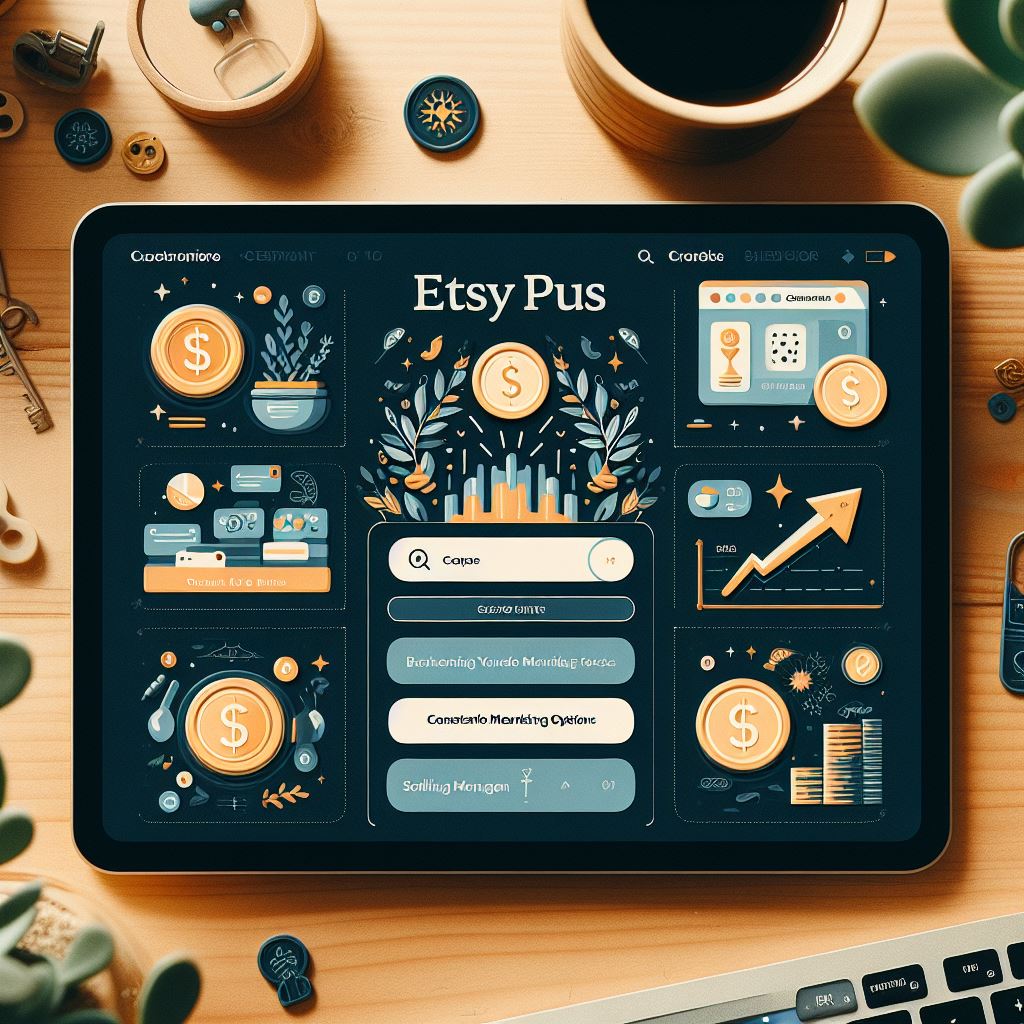
Shipping Label Fees (Not Applicable for POD)
Explanation:
Etsy offers a convenient service allowing sellers to purchase and print shipping labels directly from their platform. These labels typically come with discounted rates compared to buying them directly from shipping carriers. However, this service is not relevant for print-on-demand (POD) products, as POD fulfillment usually involves the print provider handling shipping directly.
In-Person Selling (Square Integration)
Explanation:
If you operate a physical storefront in addition to your Etsy shop, you can leverage Etsy’s integration with Square Reader to process in-person transactions using your existing Etsy listings. This integration simplifies inventory management and ensures consistent pricing across your online and offline sales channels.
Square Fees:
Keep in mind that using Square Reader introduces its own processing fees, separate from Etsy’s fees. Square’s fees typically involve a small base fee plus a percentage of the total transaction amount.
Pattern (Standalone Website)
Explanation:
Etsy Pattern provides a way to create a fully customizable standalone website for your Etsy shop. This option allows for greater control over your branding, design, and customer experience, offering a more personalized online presence beyond the confines of the Etsy marketplace.
Cost Structure:
You can test Etsy Pattern with a 30-day free trial to see if it suits your business needs. After the trial period, a monthly subscription fee of $15 USD applies.
Additional Fees:
Registering a custom domain name for your Pattern website involves additional fees. These fees cover domain registration, privacy protection, and other related services, and are charged through Etsy’s partner, Tucows Inc.
IV. Etsy Seller Fee Calculation & Minimization Strategies
With a comprehensive understanding of all potential Etsy fees, let’s dive into how to calculate your overall expenses and explore actionable strategies to keep your profits healthy.
Total Etsy Fees
Percentage Range:
Etsy typically claims 20-25% of your total sale price through its various fees. This percentage encompasses the mandatory listing, transaction, and payment processing fees. However, keep in mind that this range can shift depending on shipping costs, gift wrapping charges, and any applicable regional or optional fees you choose to utilize.
VAT Impact:
If you’re selling to customers in VAT-eligible countries, the total percentage of fees you pay can significantly increase, often reaching 30% or more. Therefore, factoring VAT into your pricing strategy is essential to maintain your desired profit margins when selling internationally.
Illustrative Example (US POD Seller)
To demonstrate the impact of Etsy fees on your profit, let’s analyze a concrete example. Consider a US-based seller using Printify to sell a print-on-demand Unisex Jersey Short Sleeve Tee to a customer in California.
Scenario:
- Item Price: $15 USD
- Shipping Cost: $4 USD
- Profit Margin: 30%
- Californian Sales Tax: 7.25%
Etsy Fee Calculation:
- Listing Fee: $0.20 USD (This is a recurring cost, as the listing fee applies to the initial listing and is then renewed with each sale.)
- Transaction Fee (including shipping): ($15 + $4) x 0.065 = $1.24 USD
- Payment Processing Fee: ($15 + $4 + $1.57 (sales tax)) x 0.03 + $0.25 = $0.88 USD
- Sales Tax Collected by Etsy: $19 x 0.0725 = $1.57 USD (Although this amount is collected from the buyer and remitted by Etsy, it’s important to include it in our calculations for a clear understanding of the complete transaction.)
Printify Cost Calculation:
- Production Fee: $9.82 USD (This is Printify’s cost for producing the t-shirt.)
- Shipping Fee: $4 USD (This is the cost of shipping the t-shirt from Printify to the customer.)
Profit Calculation:
- Total Revenue: $15 (item price) + $4 (shipping) = $19 USD
- Total Etsy Fees: $0.20 + $1.24 + $0.88 + $1.57 = $3.89 USD
- Total Printify Costs: $9.82 + $4 = $13.82 USD
- Final Profit: $19 – $3.89 – $13.82 = $1.29 USD
Etsy Fees as a Percentage:
In this example, Etsy fees represent 20.5% of the total sale price ($3.89 / $19 x 100).
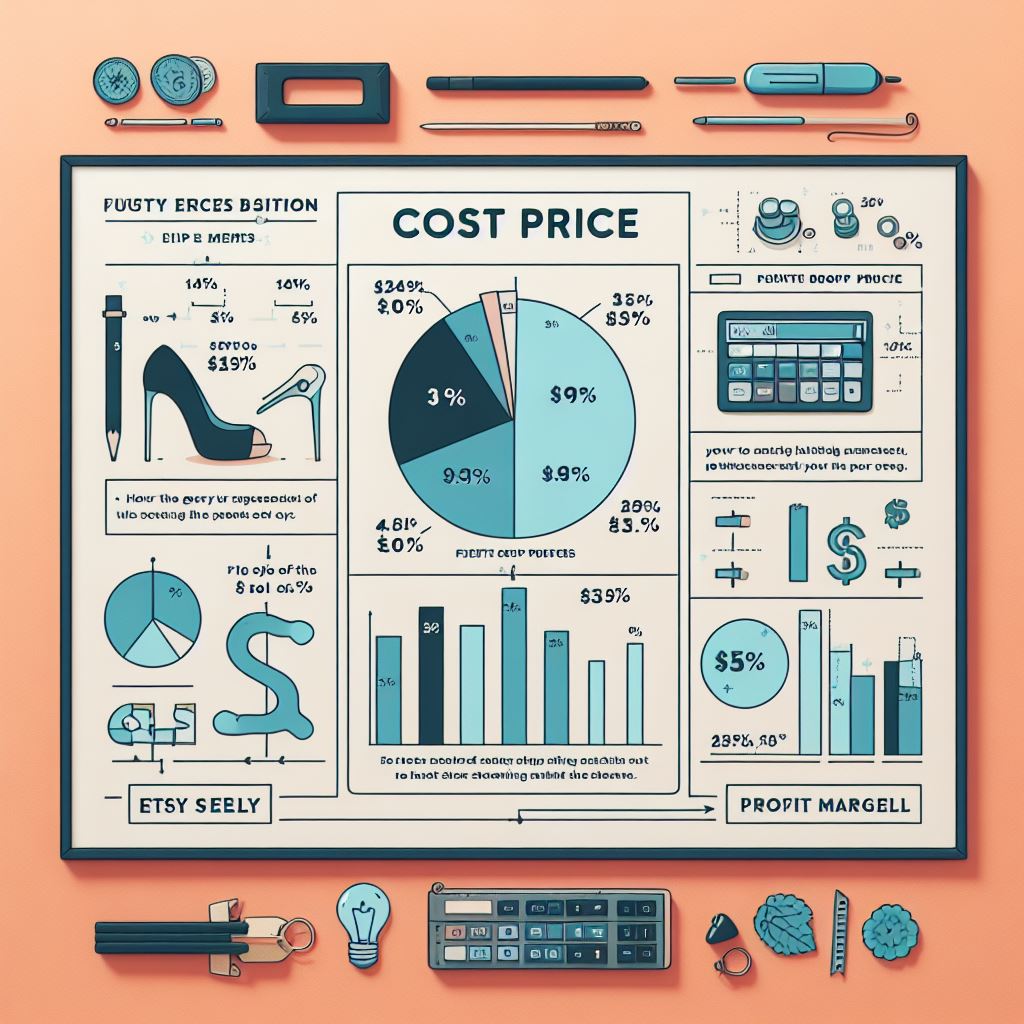
Minimization Strategies
While Etsy fees are an inherent part of selling on their platform, there are several strategies you can implement to minimize their impact and maximize your profitability.
1. Offer Free Shipping:
By absorbing the shipping cost into your product price and offering free shipping to customers, you can incentivize purchases, potentially increasing your sales volume. While it may seem counterintuitive to cover shipping costs, the potential boost in sales can often offset those costs and lead to greater overall profit. This strategy is particularly effective for mid-tier and higher-priced items where the perceived value of free shipping is more impactful.
2. Match Listing Currency to Bank Account:
To bypass the 2.5% currency conversion fee, list your items in the same currency used for your Etsy Payments account. This eliminates the need for Etsy to convert your funds during transactions. If your target market primarily uses a currency different from your local currency, consider opening a bank account in that currency specifically for your Etsy earnings. This approach allows you to avoid unfavorable exchange rates and streamline your financial management.
3. Strategically Use Ads:
Both Etsy Ads and Offsite Ads can be powerful tools for increasing visibility and driving sales. However, it’s crucial to be strategic with your advertising budget. Prioritize promoting your best-selling items or those with high demand and proven customer appeal. Additionally, ensure your listings are optimized for search by using relevant tags, writing compelling descriptions, and showcasing high-quality product photos.
When utilizing Offsite Ads, tailor your campaigns to the specific platform’s audience and their interests. By understanding your target demographics on each platform, you can create more effective ads that resonate with potential customers and improve your conversion rates.
4. Increase Prices:
Don’t shy away from adjusting your prices to account for Etsy fees and ensure a healthy profit margin. Regularly conduct market research and compare your prices to those of your competitors. Incrementally increase your prices and observe how those changes affect your sales volume. If you find a sweet spot where sales remain strong despite a slight price increase, you can effectively offset the impact of Etsy fees without deterring customers.
When adjusting your prices, clearly communicate the changes to your customers. Emphasize the value, quality, and craftsmanship of your products to justify the price increase and maintain customer satisfaction.
5. Embrace Multichannel Retailing:
Expanding your reach beyond Etsy by selling on multiple online platforms can help diversify your income streams and reduce your reliance on a single marketplace. Consider platforms like Shopify, which often offer lower transaction fees for high-volume sellers and provide more control over your brand and storefront customization.
By diversifying your sales channels, you can tap into a broader customer base, test different marketing strategies, and mitigate the potential impact of any single platform’s fees.
6. Choose Your Print Provider Wisely (For POD Sellers):
For print-on-demand sellers, selecting a print provider with fulfillment centers located near your target market can minimize shipping costs. Printify, for instance, offers a global network of print providers, allowing you to choose the best location for efficient and cost-effective fulfillment. By minimizing shipping distances, you can reduce both shipping costs and delivery times, enhancing customer satisfaction and potentially improving your profit margins.
V. FAQ
We understand that navigating Etsy’s fee structure can be complex. To address some common questions and concerns, we’ve compiled a list of frequently asked questions based on the information presented in this guide.
- Q: What happens if I can’t afford to pay my Etsy fees at the end of the month?
- A: Etsy gives you a 15-day grace period after your monthly statement is issued to pay your outstanding balance. However, if you fail to pay your Etsy fees within this grace period, Etsy may suspend your shop, preventing you from selling until your balance is settled. They may also take additional action to collect the owed amount as described in their Etsy Payments Policy. It’s important to stay on top of your Etsy bill and communicate with Etsy if you’re experiencing financial difficulties.
- Q: Are Etsy fees refundable?
- A: No, Etsy fees are non-refundable. This includes listing fees, transaction fees, payment processing fees, and any other fees associated with optional services you choose to use.
- Q: Can I avoid paying Offsite Ads fees?
- A: If your shop has made less than $10,000 USD in sales within the last 365 days, you have the option to opt out of Offsite Ads. However, once your shop hits that $10,000 USD sales threshold, participation in Offsite Ads becomes mandatory for the lifetime of your shop. The good news is that once you reach this level, the fee for attributed sales is reduced from 15% to 12%. Even if your sales later fall below the $10,000 threshold, you will remain enrolled in the mandatory Offsite Ads program at the discounted 12% fee rate.
- Q: Do I have to use Etsy Payments?
- A: Etsy Payments is mandatory for sellers in certain countries. For sellers in other countries, it might be optional for physical product sales but required for specific listing types, such as digital downloads. Refer to the Etsy Payments Policy to see if it applies to your region and the type of products you’re selling.
- Q: How are taxes handled for print-on-demand products?
- A: Printify, a popular print-on-demand service, automatically calculates, collects, and remits sales tax for US orders that are manually placed through their platform. However, for orders imported from your Etsy shop to Printify, the sales tax is charged by Etsy at the marketplace level. This means you won’t be charged sales tax again by Printify. This system simplifies sales tax compliance for sellers.
- Q: Does Printify handle VAT for international orders?
- A: Printify is currently working on implementing the OSS (One-Stop Shop) and IOSS (Import One-Stop Shop) systems to simplify the process of collecting and remitting VAT on European orders. These systems streamline VAT compliance for sellers, reduce complexities for buyers, and facilitate smoother international transactions.
VI. Conclusion
Etsy offers a dynamic platform for creative entrepreneurs to showcase their products to a global audience. However, navigating its fee structure can initially seem like a maze. By understanding the different types of Etsy fees—mandatory, region-specific, and optional—you can gain a clearer picture of your selling costs and develop a strategic approach to pricing your products for profit.
Remember to factor in regional fees like VAT and sales tax, make informed decisions about optional services like Etsy Ads and Etsy Plus, and maintain transparent communication with your customers about your pricing and fee structure.
For aspiring and established sellers looking to enter the Etsy marketplace or expand their product offerings, print-on-demand services like Printify provide a flexible and cost-effective solution. With a diverse product catalog, a user-friendly design platform, and seamless Etsy integration, Printify empowers you to focus on building your brand and creating unique products while minimizing production and fulfillment challenges.
Ready to unlock your entrepreneurial potential and embark on your Etsy journey? Sign up for a free Printify account today and begin creating and selling your one-of-a-kind products!

